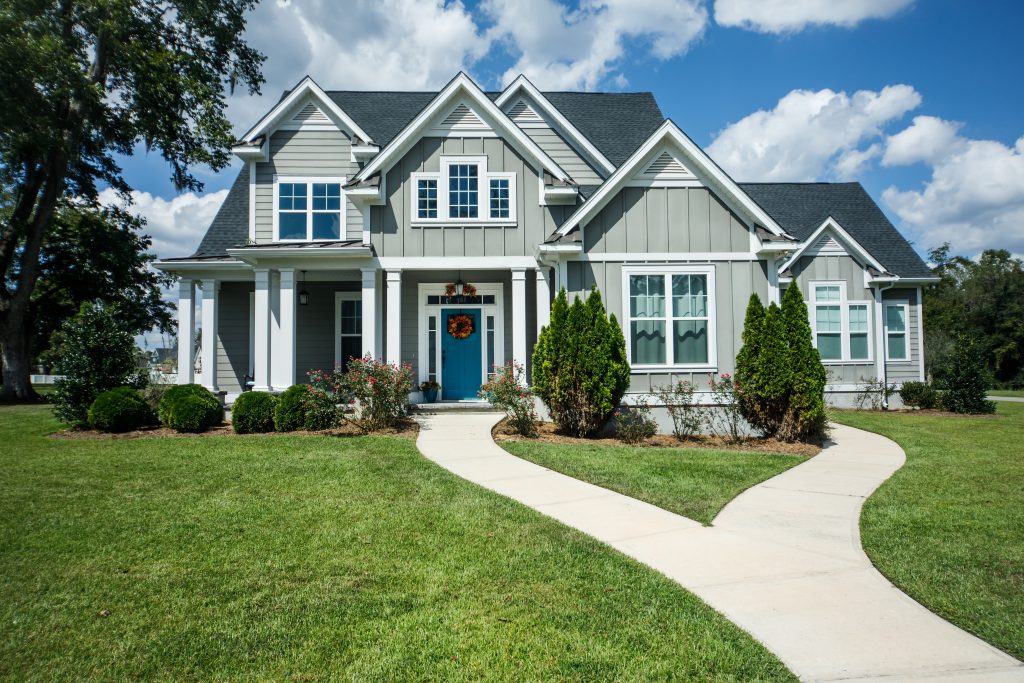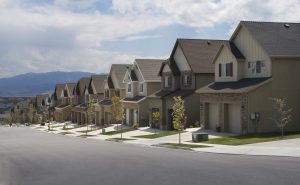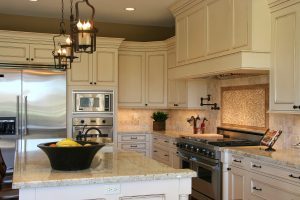Build a Home vs. Buy a Home: What Are Your Options?


As we start a New Year many have made moving into a new home their top New Year’s Resolution. But what does “new home” really mean? There are many options. For some it could just mean moving into a home that is different from the one they are living in now. It could be a used home/existing home in an established neighborhood. For others it could mean moving into a community where the homes are ready to move into, just point and buy. While others want to choose the colors, their floor plan and their options. But even then you have options. Do you build a home in a community with limited floor plans and limited options? Or, do you go all out? Do you build a custom home on a lot you purchase and design it and choose all of the options and colors? Let’s explore your options and what they mean for you!
Buying an Existing(Used) Home
Buying an existing or used home is usually the fastest way to purchase a home. You will usually work with a Real Estate Agent that will quiz you on the things that are important to you, establish a list of homes that will likely meet your needs, and then you select the one you like most and make an offer. If all goes well you could be moving in in about 30 – 60 days. While it doesn’t usually go as fast as those shows on HGTV, it is typically the fastest way to be living in a home that is new to you. Depending on the housing market you live in, inventories are down. Finding that right home may take longer or there may be a bidding war once you find it. But (and this is a big BUT), depending on the age of the home, buying an existing home means buying all of its problems. About half of the average house needs replaced during its first 30 years. The big dollar items include the roof, the heating and cooling system, and the home’s appliances.
Many items can be caught and identified with a home inspection. HGTV and the DIY channel have dozens of home improvement programs that show how a home went from a fixer upper to the nicest home in the neighborhood in just a few weeks. Just two things to think about: first, no remodel or home improvement is done in a just few weeks. Second, every existing home has a hidden “opportunity”. It can be insect infestations, hidden water damage, bad electrical wiring, etc. But every one of those shows and every home featured has something that the professionals didn’t uncover when they talked the home buyer into purchasing that specific home for the makeover. For a slightly lower price than a new home, you get an older home that has more wear and tear, is usually less energy-efficient, and typically requires some expensive maintenance task to be completed. How much work and how expensive it will be usually hinges on the home’s age.
Your New Home Options
When it comes to building a new home, you have several options. It could be to buy what is called a “spec” home. A builder or developer buys the land and builds a brand new home on it and then puts it up immediately for sale. You could buy what is called a production home from a developer/builder in one of several communities that exist in your area. Building a custom home on a lot you own or a lot you buy is also an option. Here is how they compare:
Spec Homes – A spec home may or may not be on a scattered lot. In fact you may find them just about anywhere. A spec home gets its name because it is a speculative venture for a builder. This means that it was built by a builder with the intention to sell quickly as-is for a profit. Because it a completed home and is being sold as-is the builder chose the floor plan, the exterior colors, the flooring, kitchen cabinets, counter tops, etc. It is a new home built to current code and can come with a warranty. Being a new home means it is more energy efficient than an older a home and is move in ready today.
 Production Homes – In the past, other names for a production home were tract homes or cookie-cutter homes. Production builders have worked hard to overcome some of the negative stereotypes because of the lack of variation in plans and communities. Today, a production builder selects a handful of home plans that they will offer in the community and a then offers a few options for upgrades such as in the kitchen, the master bath, or maybe even a finished basement. When it comes to choosing options in the home, they usually have a defined catalog of products that a buyer can choose from to customize their selections. In some cases, the home may already be built and all you have to do is view, choose, and buy.
Production Homes – In the past, other names for a production home were tract homes or cookie-cutter homes. Production builders have worked hard to overcome some of the negative stereotypes because of the lack of variation in plans and communities. Today, a production builder selects a handful of home plans that they will offer in the community and a then offers a few options for upgrades such as in the kitchen, the master bath, or maybe even a finished basement. When it comes to choosing options in the home, they usually have a defined catalog of products that a buyer can choose from to customize their selections. In some cases, the home may already be built and all you have to do is view, choose, and buy.
 Custom Homes – The NAHB notes that custom homes are one-of-a-kind creations that stand out in a crowd. While that is certainly the case for many custom homes, that is not the case every time. For many, a custom home means getting what they want, not what they are told they can have. Another main point is that custom homes are built on land that is typically already owned by the home buyer or is about to be purchased by the home buyer.
Custom Homes – The NAHB notes that custom homes are one-of-a-kind creations that stand out in a crowd. While that is certainly the case for many custom homes, that is not the case every time. For many, a custom home means getting what they want, not what they are told they can have. Another main point is that custom homes are built on land that is typically already owned by the home buyer or is about to be purchased by the home buyer.
Because the homes are custom built to a buyers plan, home can be built from unique plans and provided virtually anywhere. They are can reflect the location in which they are being built and the unique style of the home buyer. Depending on the custom home builder chosen to provide the home, a home buyer may choose from almost any material, any product, and any style they want. The options can be virtually unlimited! The process of building a custom home can take time, in some cases nine months to a year from starting the process until you actually can move in.
Steps to Your New Custom Modular Home!
Most custom modular homes are built on a customer’s lot or one they are about to own. However, don’t confuse custom with the term expensive. Modular construction concentrates much of the work that needs to be done to create a custom home in a factory. The advantage of a custom modular home is that while work that needs to be done onsite is taking place, your custom home is being built in the factory. This streamlined process allows you to get custom quicker! Be sure to explore all of your options when it’s time to build your new home!
Here are some next steps to prepare you for building a new home:
Getting your Credit House in Order – While good credit opens the door to building your custom dream home, poor credit can close it. Get the highest credit score possible before applying for a loan.
Learn about Modular Home Construction Loans – Take some of the mystery out of construction loans. Here are the seven basic steps to getting a construction loan.
Home Styles – An architectural home style is characterized by features that make a home or building notable or identifiable. Let’s see which ones you find most attractive.
Creating an Energy Efficient Home – The path to zero energy has gotten much shorter in recent years. Learn about the key items when designing a zero energy home.
The post Build a Home vs. Buy a Home: What Are Your Options? appeared first on Impresa Modular.




